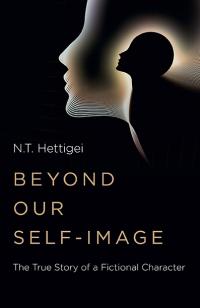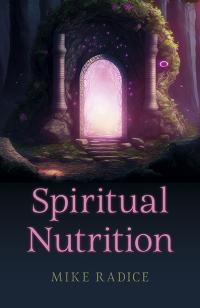

January in the Wheel of the Year Part 2: Observing Nature in Winter - Lucya Starza
For pagans who celebrate the cycle of the seasons, going out and seeing what’s happening in nature is invaluable. Observing things with our own eyes is better than just reading about the Wheel of the Year in books or blogs – including this one! In England, where I live, January is often colder and frostier than December. There can be ice and snow, trees are bare, but there can also be signs of life. On January walks I look for yellow winter aconite, early cherry blossom, and winter camellia. In my garden the honeysuckle and some roses bloom a little all year, with red rose hips and evergreens adding colour too.
Natural Mandalas of the Seasons
Creating a mandala from natural objects such as flowers, leaves, berries and so on every month gives a reason to venture outdoors. Collect some if permitted, then take them indoors and arrange them on a sheet of paper. Meditate on what you’ve created. You can photograph your artwork before the greenery fades. If you started a scrapbook, as I suggested in my previous post, add the picture to it.
Mandalas made each month from things found in nature can reflect our own feelings and how they change as well as celebrating what’s happening over the seasons. If you do this each month, then again in different years, you can observe an annual pattern of similarities, but never quite the same. I should add that I’m using the term mandala loosely to mean a picture or pattern with a spiritual significance to meditate on. The original sense of the word comes from Hinduism and Buddhism and is a reflection of the universe and the connectedness of life; my use is more eclectic. You could just call it art for contemplation.
 Guided Visualisation: The January Garden
Guided Visualisation: The January Garden
This guided visualisation celebrates what’s happening in nature at this time of year in my part of the world. I based it on things I’ve seen in my own garden, so the themes include nature, wintery weather, water, and ice. Guided visualisations are journeys we make in our minds using a script created to help us experience a story we’re part of. They’re intended to help us know ourselves better as well as to attune ourselves to the cycles of nature. The nice thing is you can do them even if you can’t physically get outdoors. Before starting, make sure you’re in a safe, comfortable place where you won’t be disturbed.
Sit comfortably and close your eyes. Take three deep breaths in and out and relax. Visualise the following:
Visualise putting on winter clothes then walking out of a warm and cosy home, through a door, into a garden on a clear, bright, frosty morning. The sun is shining, but outside the air is cold and glints of frost sparkle on everything. Look around. Most of the trees and hedges stand bare, yet some are evergreen. There are a few bright berries among the brown stalks. Some flowers bloom in wintertime. Few and far between perhaps, but maybe you can spot them. The flowerbeds are mostly brown earth, but you can just see green shoots of early spring bulbs starting to push their way through the soil. The grass is green under a crisp white coating of frost. In places there are fallen leaves from last year, also frost-rimed. Spend some time exploring the garden. What do you see? What do you smell? What do you hear? What do you feel?
You spot a pool of water that has frozen over. Perhaps it’s a puddle of rainwater, maybe it’s a bird bath, or a pond or lake. You are drawn to look at it. The surface is covered with ice. Look at the ice. It isn’t a plain, flat, surface. Geometrical patterns run through the crystalline frozen water. The sun glints on them, making them stand out and shimmer. Spend some time looking at the patterns. Contemplate them. Are they a cohesive whole, or made up of unique and individual parts? Does any aspect draw your attention? Spend some time studying this.
After a while you spot something below the frozen water. Look through the layer of ice into the dark water still liquid below the crystalline surface. Peer into it. What do you see there? Is it a natural thing, or man-made? Is it something meant for you? Perhaps it’s something you had lost and have now rediscovered. Is it something that should be there? Do you want to break the ice and free or retrieve it, or leave it? Decide if you will do anything, and if so, what. Visualise doing that.
Now, look at the item again. Does it seem different? If it’s something you’ve retrieved, will you keep it or leave it in the garden?
Having acted as you feel is right, look up from the frozen pool. Look around the garden again, then make your way back to the doorway. It’s time for you to return indoors to the warm and cosy home. Visualise doing that.
When you are ready, take a deep breath, shake your fingers and toes, and open your eyes to the real world.
After you’ve done any magical work, or a guided visualisation, you should ground to make sure you’re fully back to reality. The best way is to have something to eat and drink – perhaps a wintertime warming favourite. You can repeat a version of this visualisation each month of the year, but picture in your mind’s eye how the garden changes as the seasons gradually turn. Make notes or draw pictures and store them in a journal or your scrapbook.
This is part of a series of posts I’m writing for the Moon Books Blog on the theme of the Wheel of the Year. They will be compiled and edited into a book: Pagan Portals – Wheel of the Year. Other books by Lucya Starza in the Pagan Portals series include Candle Magic, Guided Visualisations, Poppets and Magical Dolls, and Scrying. Lucya edited the community book Every Day Magic – A Pagan Book of Days.
Categories:
0 comments on this article






